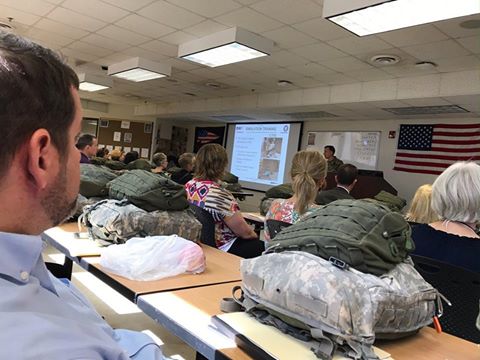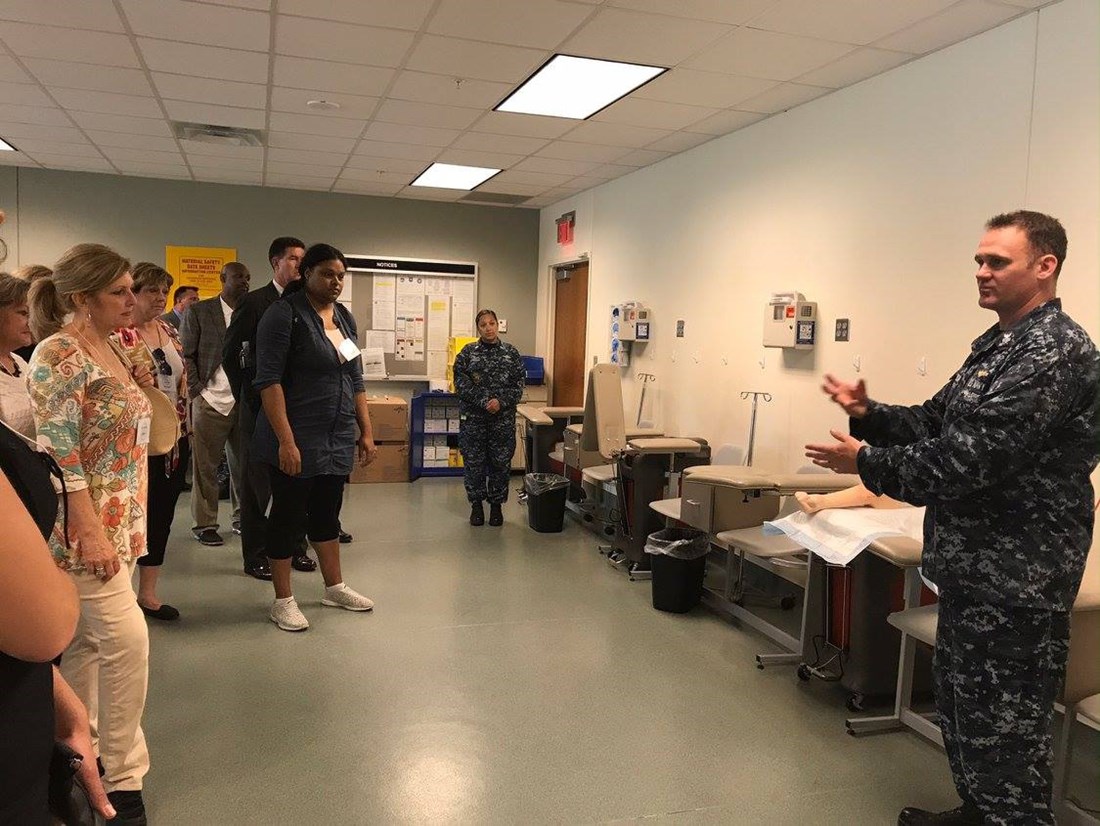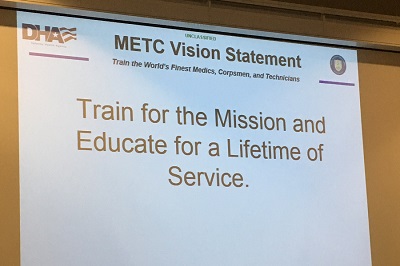The EAC recently held its annual Standards Board meeting in San Antonio, Texas. The board, which is comprised of a state and local election official from each state and territory, is critical to ensuring the EAC understands the needs of the election community and how we can best serve election officials. As part of the meeting and thanks to our partners at the Federal Voting Assistance Program (FVAP) participants were given a tour of Joint Base San Antonio. This is the base where medics and corpsmen from across all service branches receive their initial medical training.
 As we listened to various presenters from the base discuss their mission, values and goals, one lesson that was shared by all presenters was the lesson of the tourniquet. The tourniquet, a simple medical device used to stem blood loss, has been a part of battlefield medicine since before the civil war. In the last century, however, there was a shift in policy and military medical personnel were trained to only use tourniquets as a last resort because it was deemed a hindrance to proper treatment in the field and could be dangerous to soldiers wounded on the battlefield. In more recent years, that approach changed based on a military doctor’s examination of data about battlefield casualties and causes of death. The data showed that a large number of wounded soldiers were dying before they ever made it to the military hospital due to blood loss, a phenomena that could be addressed by reintroduction of the tourniquet as part of standard medical procedure on the battlefield. Today, thanks to data analysis, the tourniquet is often the first step taken when treating a wounded soldier because it immediately mitigates the greatest threat to life and gives the soldier the best chance to make it to the hospital to receive more advanced treatment. This simple decision is credited with contributing to the dramatic reduction in battlefield casualties across all services.
As we listened to various presenters from the base discuss their mission, values and goals, one lesson that was shared by all presenters was the lesson of the tourniquet. The tourniquet, a simple medical device used to stem blood loss, has been a part of battlefield medicine since before the civil war. In the last century, however, there was a shift in policy and military medical personnel were trained to only use tourniquets as a last resort because it was deemed a hindrance to proper treatment in the field and could be dangerous to soldiers wounded on the battlefield. In more recent years, that approach changed based on a military doctor’s examination of data about battlefield casualties and causes of death. The data showed that a large number of wounded soldiers were dying before they ever made it to the military hospital due to blood loss, a phenomena that could be addressed by reintroduction of the tourniquet as part of standard medical procedure on the battlefield. Today, thanks to data analysis, the tourniquet is often the first step taken when treating a wounded soldier because it immediately mitigates the greatest threat to life and gives the soldier the best chance to make it to the hospital to receive more advanced treatment. This simple decision is credited with contributing to the dramatic reduction in battlefield casualties across all services.
 This story, told time and time again by the medical training staff across the base, left me wondering if there is an election equivalent of the tourniquet. Is there a simple elegant practice, technique, or procedure that has been known in elections for years that we are ignoring or setting aside in pursuit of a more complicated or technical approach to challenges we face? Could it be creating a more useable process through simple improvements to forms and ballots? Is it a different approach to voter education? Is it a new technique to recruit and train poll workers? Is it a simpler approach to polling place layout?
This story, told time and time again by the medical training staff across the base, left me wondering if there is an election equivalent of the tourniquet. Is there a simple elegant practice, technique, or procedure that has been known in elections for years that we are ignoring or setting aside in pursuit of a more complicated or technical approach to challenges we face? Could it be creating a more useable process through simple improvements to forms and ballots? Is it a different approach to voter education? Is it a new technique to recruit and train poll workers? Is it a simpler approach to polling place layout?
In July of this year EAC will release its 2016 EAVS survey. The survey is the most comprehensive set of election administration data collected. As election administrators prepare for elections this year and the 2018 federal election cycle, the EAC will work with them to use the 2016 EAVS data to better secure resources, improve processes and educate their stakeholders on how elections are run in their community. Like the military doctors that dug into the data and rediscovered the tourniquet’s lifesaving benefits, the EAC will work with election officials to analyze the EAVS data to find those simple, inexpensive solutions that can improve services to voters, as well as increase the efficiency and accuracy of the process.
 Thank you to all the members of the military and their families for your service and sacrifice. Thank you to FVAP and its Director David Beirne for organizing the trip to Joint Base San Antonio. It was not only a powerful experience for me and the members of the EAC Standards Board, but it also inspired us to think about our own work in new ways. Just like the soldiers at Joint Base San Antonio, where the mission is to provide “unrivaled installation support and service to enable Mission Partner Success,” we are working to provide state and local election leaders with the support they need to fulfill their mission to carryout accurate, accessible, and secure elections.
Thank you to all the members of the military and their families for your service and sacrifice. Thank you to FVAP and its Director David Beirne for organizing the trip to Joint Base San Antonio. It was not only a powerful experience for me and the members of the EAC Standards Board, but it also inspired us to think about our own work in new ways. Just like the soldiers at Joint Base San Antonio, where the mission is to provide “unrivaled installation support and service to enable Mission Partner Success,” we are working to provide state and local election leaders with the support they need to fulfill their mission to carryout accurate, accessible, and secure elections.

